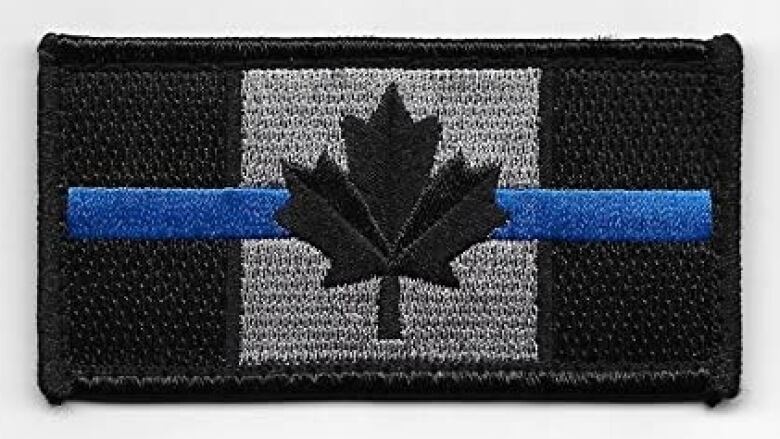CPS seeks 'voluntary compliance' from its officers after commission bans thin blue line patches
Commission members 'frustrated' that police association is distributing more patches

Two days after the Calgary Police Commission announced its decision to no longer permit on-duty police officers to wear a controversial patch on their uniform, the police force says its initial strategy will be to seek "voluntary compliance."
After about a year of deliberation, the commission which provides civilian oversight and governance of the policesaid Wednesday it would no longer allow the thin blue line patch worn by officers.
That same day, the Calgary Police Associationdoubled down in its opposition to this decision, with president John Orr writing in a letter to members that was obtained by CBC News.
"Weencourage each and everyone of you to wear this important symbol in defiance of the order from the commission," Orrsaid in the letter.
Orr added that the association, which represents more than 2,000 Calgary police officers, had anticipated the commission's decision and purchased enoughCanadian flag patches with a thin blue line through them for all uniformed members, as well as lapel pins for members in plain clothes.
In a statement on Friday, the commission said this response "frustrated" many of its members and it remains committed to working with the Calgary Police Association and the Calgary Police Senior Officers Association totry to find a replacement symbol for the patch.

"The commission's direction to officers through the chief was to stop wearing the controversial patch while on-duty, starting today," it said in a statement.
The Calgary Police Service (CPS) said it doesn't have details on whether members are continuing to wear thepatches.
"Our aim in the initial stages of this will be to work with our members to gain voluntary compliance. This approach will be evaluated as we move forward through this with our members," a CPS spokesperson wrote in an email.
Commission chair Shawn Cornettsaid the commission has "no desire" to enforce this decision through discipline or coercion.
"However, it is deeply concerning that the police associations and senior officers are encouraging police officers to disregard a lawful direction given by the body Calgary's elected government has appointed to provide police oversight. That is something that will absolutely need to be addressed if it continues."
Differing interpretations
The commission acknowledgedthere are mixed feelings on the patch.
"We know the thin blue line patch is a symbol with deep, positive meaning to the police officers who wear it to support one another and honour those who have given their lives to keep us safe," said Cornett.
Orr, the police association president, this week expressed disappointment with the commission's decision, addingthatrecent incidents, like the death of Sgt. Andrew Harnettin the line of duty, have given the patch "an even greater importance."
Les Kaminski, who recently served as association president and started with CPS in 1986, said he had heard about the thin blue line throughout his career until he retired.
"It was a symbol of pride that the members held knowing that thin blue line is what divided the good peacekeeping, law-abiding citizen from the predators," he explained. "And we were the thin blue line, which was necessary to ensure citizens could live in peace."
"We owned it. The police owned it," said Kaminski. "It's nothing to do with fringe groups or racism."
The commission, however,found during its consultation process over the past year that the patch has a history of being associated with white supremacy.
"The historical roots of the thin blue line are in colonial ideals that have caused immense suffering for Canada's Indigenous peoples and people of colour all around the world," said the commission in a statement.
The symbol has been featured in high-profile protests with links to white nationalist orracist views, andit's been seen at counter-protests against the Black Lives Matter movement.
Itwas first popularized in the 1950sby Chief William H. Parker of the Los Angeles Police Department. He expressed views and policies that lead to accusations of police brutality and racism, the commission said.
The patch was never officially approved for officers to wear, but it started regularly appearing on uniforms when officers were given body armour that included places where patches could be attached.
Adora Nwofor, president ofBlack Lives Matter YYC, told CBC News earlier this week that the removal of the patch is step forward in helping people feel safer around the police, but more effort is needed from the police.
With files from Nadia Moharib and Jade Markus












_(720p).jpg)


 OFFICIAL HD MUSIC VIDEO.jpg)
.jpg)



























































































